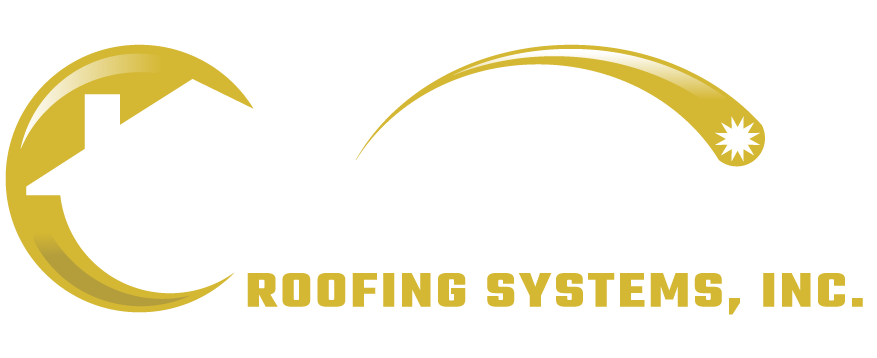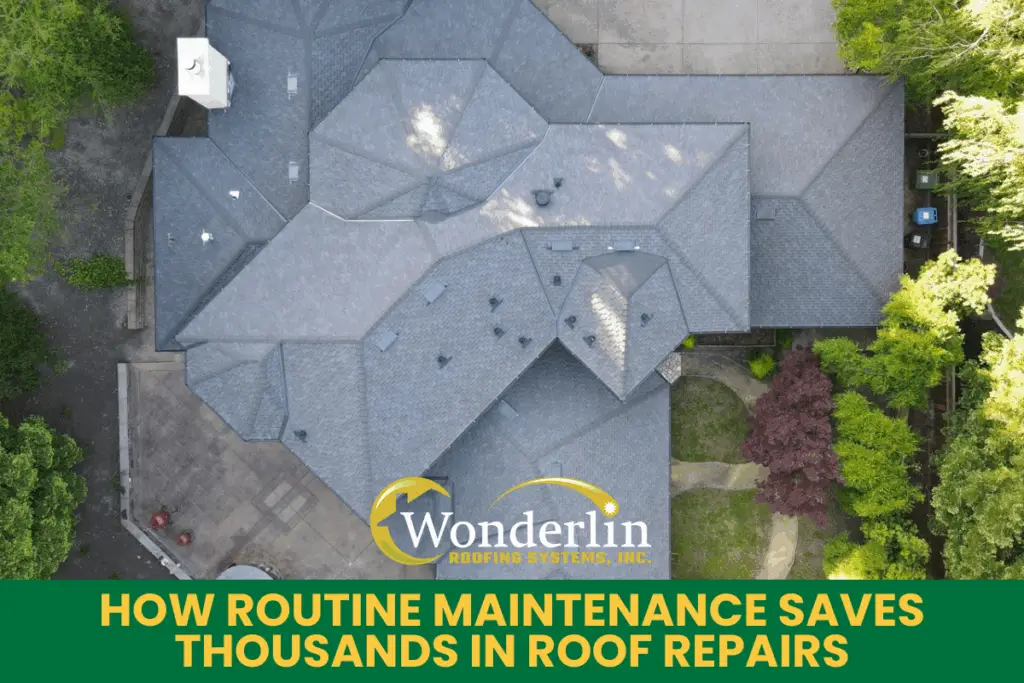If you’ve ever had a surprise roof leak during a winter storm, you know how quickly a small issue can snowball into a major expense. At Wonderlin Roofing, we’ve seen it all—from cracked shingles causing attic mold to clogged gutters warping fascia boards. The truth is, routine maintenance isn’t just about upkeep. It’s a powerful form of prevention that protects your wallet, your home, and your peace of mind.
Small Issues, Big Price Tags: The Cost of Neglect
Minor roof problems—loose flashing, cracked tiles, missing shingles—often go unnoticed until they escalate. According to the National Roofing Contractors Association, over 80% of roof problems stem from neglected maintenance. What starts as a $200 repair can turn into a $10,000 replacement if water intrusion affects your attic, insulation, or electrical systems.
Routine maintenance helps catch issues early. With scheduled inspections and seasonal cleanings, homeowners avoid the high cost of emergency service calls, structural damage, or mold remediation.
Extending the Life of Your Roofing System
A quality roof in the East Bay can last 25 to 50 years depending on the materials used—but only if it’s maintained properly. Regular upkeep can extend a roof’s lifespan by 30% or more. That means a roof that might need replacement at year 20 could instead serve you faithfully until year 30 or beyond.
This isn’t just speculation. Industry studies have shown that proactive maintenance adds 8–10 years of life to an average roof. That’s a decade of deferring a five-figure investment.
Weather-Readiness: Protecting Against the Elements
The Castro Valley climate isn’t gentle—sun-baked summers, gusty fall winds, and heavy winter rains put serious stress on roofing systems. Maintenance prepares your roof to handle the elements. Clean gutters, sealed flashings, and intact venting all work together to deflect water, regulate attic temperatures, and reduce weathering.
Without this, storm damage can create cascading problems: leaks become rot, rot weakens framing, and weakened framing turns into a full replacement. Regular checkups—especially before winter—ensure you’re not gambling with your home’s first line of defense.
Boosting Energy Efficiency and Home Comfort
Poorly maintained roofs let conditioned air escape and moisture creep in. The result? Higher energy bills and an uncomfortable living environment. A well-maintained roof, on the other hand, helps regulate indoor temperatures and enhances the performance of your attic insulation and HVAC system.
That’s not just comfort—it’s cost savings. The U.S. Department of Energy notes that homeowners can save up to 30% on energy bills with proper attic ventilation and insulation, which starts with a solid, leak-free roof.
Resale Value and Inspection Peace of Mind
When it’s time to sell, your roof becomes a make-or-break issue. A roof in disrepair is a red flag for buyers and can tank your asking price. Routine maintenance, documented and consistent, shows that you’ve cared for your home. This can expedite sales, raise your appraisal, and reduce negotiations or repair demands.
Home inspectors often find issues sellers didn’t know about—routine maintenance flips that script. You’ll know the state of your roof, and so will your buyers.
Real-World Case: Castro Valley Roof Rescue
One of our longtime Castro Valley clients called us after noticing ceiling stains in their guest room. Our inspection revealed a failed flashing around a dormer—something that could’ve been caught earlier with a seasonal check. That small fix turned into replacing decking and insulation. Cost? Over $6,500.
Since then, the homeowner has signed up for regular maintenance and hasn’t had a single issue. Prevention saved them thousands on what could’ve been another major repair.

What Routine Maintenance Involves
For most East Bay homes, routine roofing maintenance includes:
- Bi-annual inspections (fall and spring)
- Gutter cleaning and debris removal
- Checking for cracked, loose, or missing shingles
- Flashing and sealant inspection around vents, skylights, and chimneys
- Moss and algae treatment if needed
- Ventilation check to prevent condensation and heat buildup
At Wonderlin Roofing, our crews treat every inspection like it’s our own home—because it’s our neighborhood too.
Common Roofing Myths—Busted
“New roofs don’t need maintenance.” False. Even new installations can suffer from poor drainage or debris buildup.
“It’s cheaper to wait until there’s a problem.” Wrong again. Deferred maintenance is almost always more expensive than prevention.
“My roof looks fine from the ground, so it must be okay.” Most roof damage isn’t visible from the curb. Only a close-up inspection can reveal the truth.
Seasonal Maintenance Checklist for Homeowners
Spring
- Check for winter storm damage
- Clean gutters and downspouts
- Inspect roof valleys for debris buildup
Summer
- Ensure proper attic ventilation
- Watch for UV damage to shingles
Fall
- Remove leaves and branches
- Seal around skylights and vents
Winter
- Inspect after heavy rains
- Look for signs of moisture inside (ceiling stains, musty smells)
Ready to Protect Your Roof—and Your Wallet?
Routine maintenance is one of the smartest investments a homeowner can make. It’s simple, cost-effective, and brings peace of mind through every season.
Let Wonderlin Roofing help you create a maintenance plan that fits your roof and your budget.
FAQs
How often should I schedule roof maintenance?
Every 1 to 3 years, depending on your roof type and condition. For example, composition shingle roofs may only need inspection every 2–3 years, while tile or flat roofs might benefit from more frequent checkups. Regular maintenance helps catch small issues before they turn into costly repairs—and keeps your warranty valid.
Is roof maintenance really worth it for newer roofs?
Absolutely. Even new roofs need upkeep to stay in top condition, especially in areas with wind, sun, and tree debris.
Can roof maintenance improve my home insurance coverage?
Some insurers offer discounts for proactive maintenance or newer roofs in good condition—ask your agent for details.

